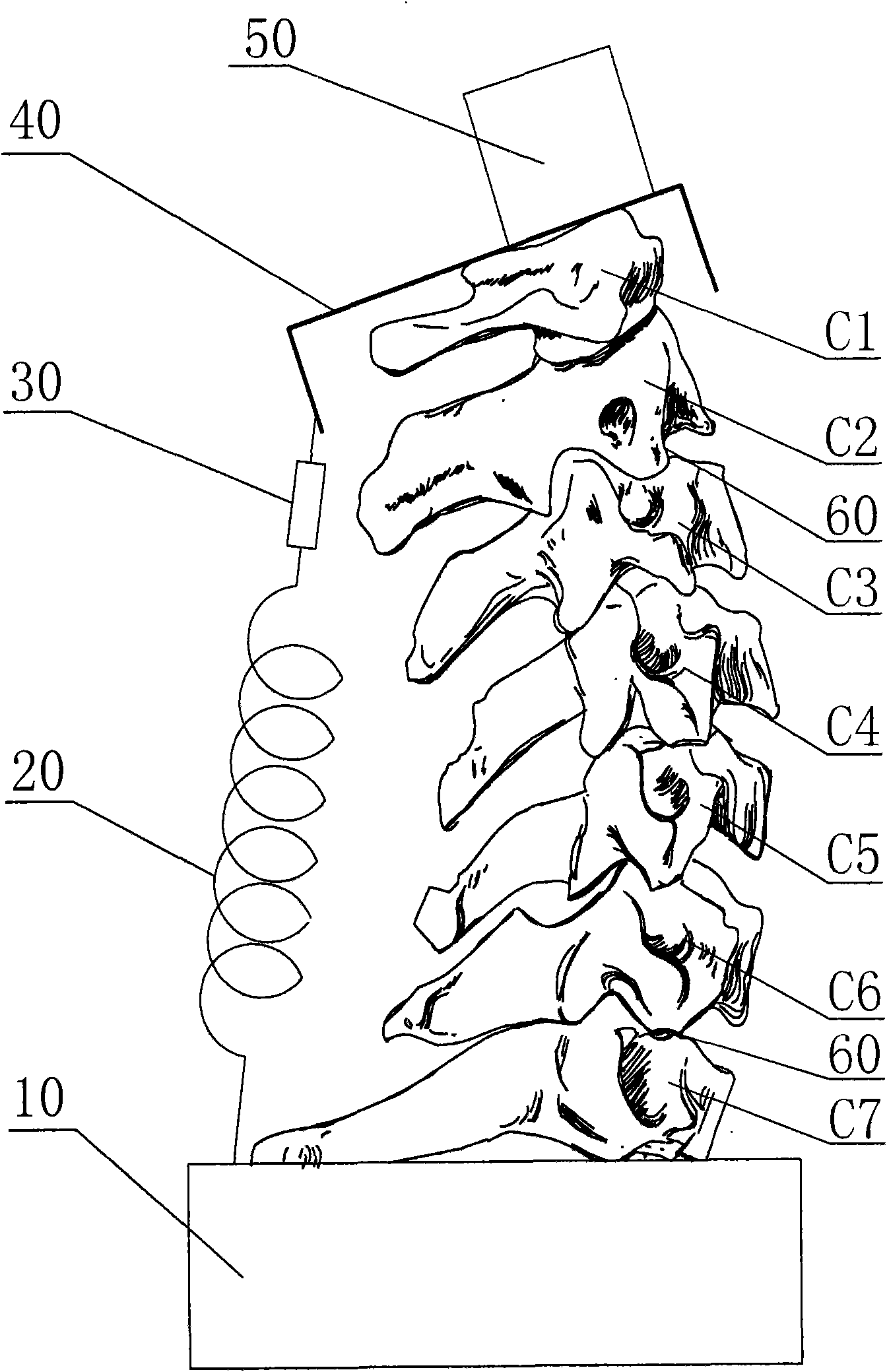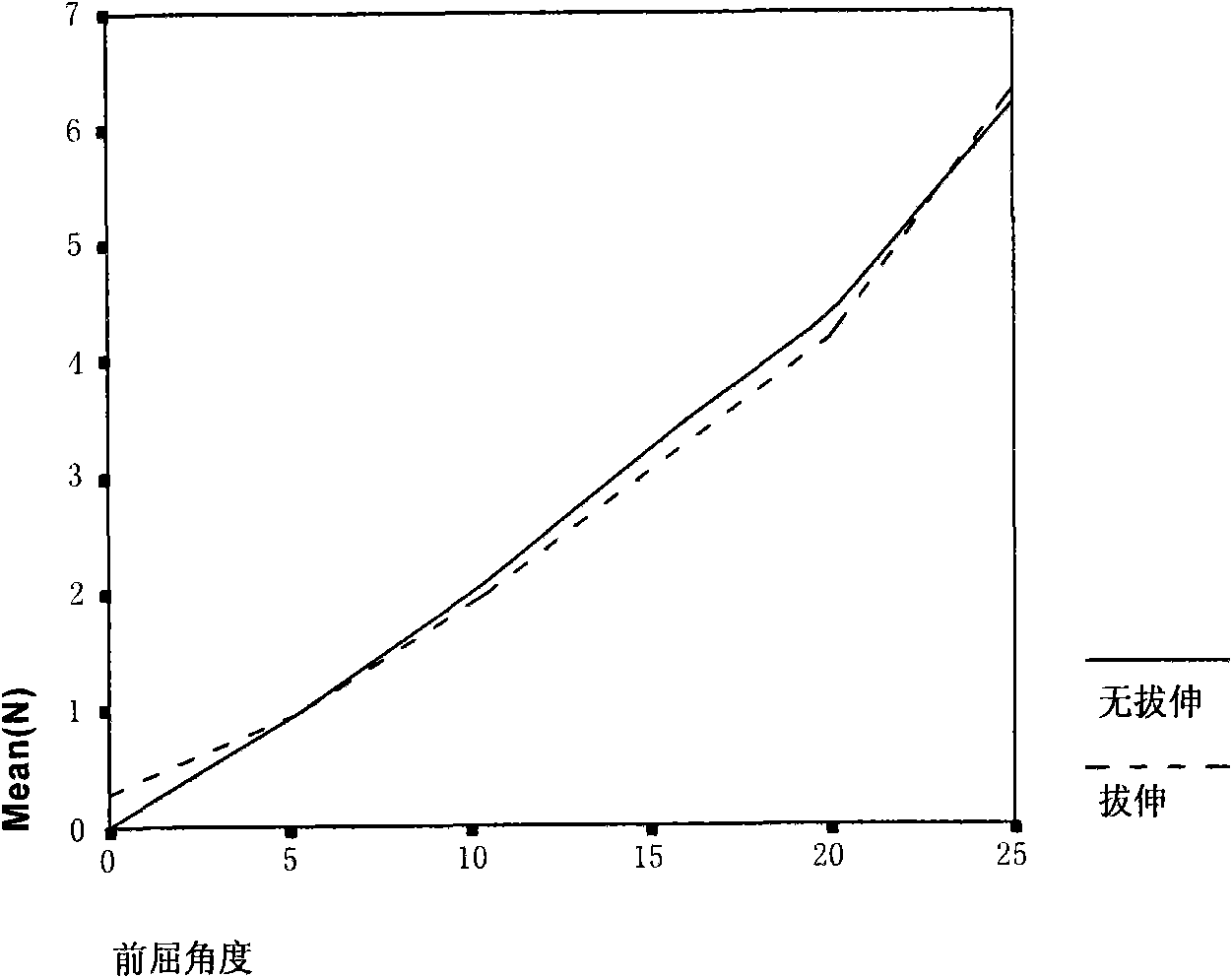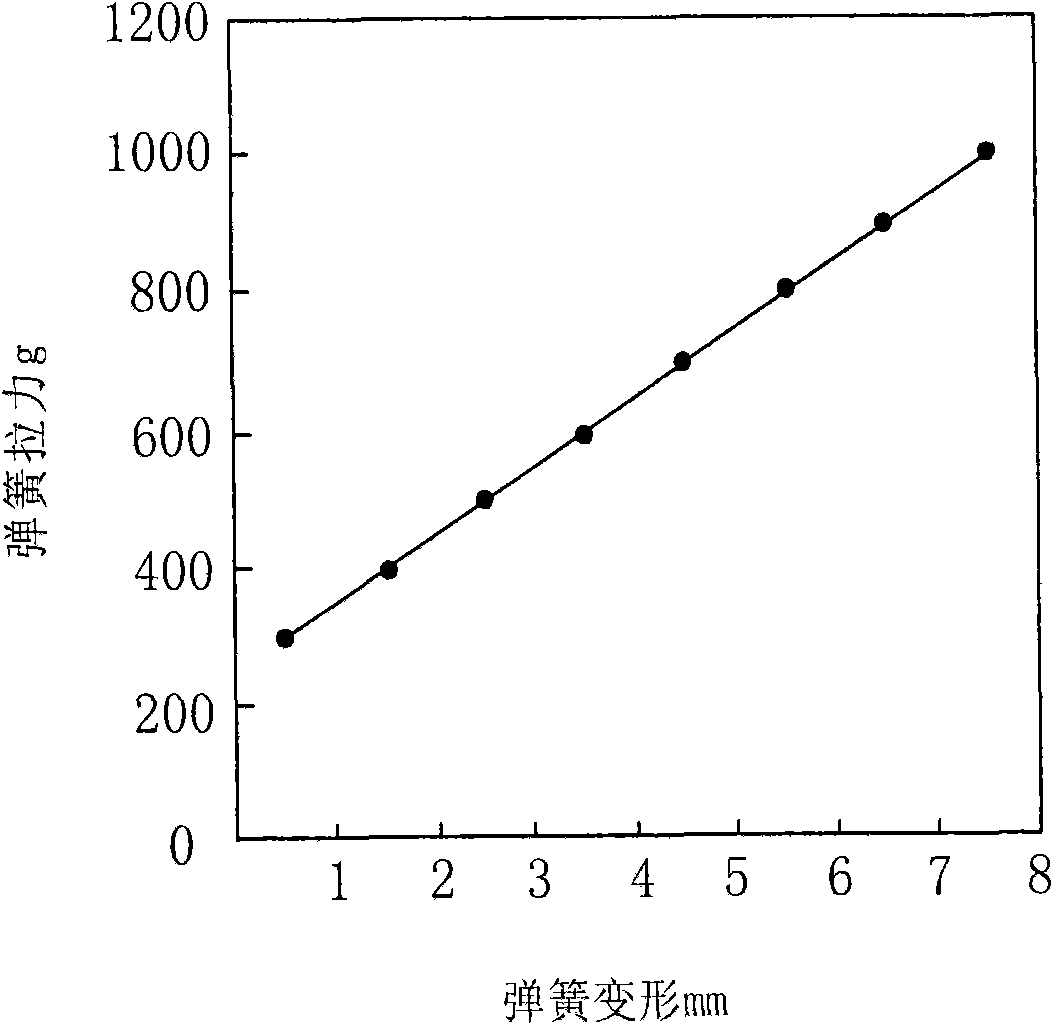Semi-on-body biomechanical experimental method using cervical structure to simulate extensor muscles behind the neck
A mechanical experiment and biomechanical technology, applied in the field of cervical vertebra biomechanics experiments, can solve the problems of lack of biological changes, errors in experimental results, and the authenticity of model construction.
- Summary
- Abstract
- Description
- Claims
- Application Information
AI Technical Summary
Problems solved by technology
Method used
Image
Examples
Embodiment Construction
[0038] Experimental method of the present invention comprises the following steps:
[0039] 1. Preparation of in vitro biomechanical models
[0040] (1). Source and production of specimens
[0041] A human cervical spine that died of acute traumatic brain injury was used. A segment of the spine from the base of the skull to the second thoracic vertebra is amputated within 2 hours of death, such as figure 1 As shown, it includes the first to seventh cervical vertebrae C1-C7 and the first and second thoracic vertebrae. Muscles are removed to avoid damage to ligaments and small joints. The above-mentioned human cervical spine specimens were placed in a natural position, avoiding hyperextension, hyperflexion and rotation, and stored in a low-temperature refrigerator at -40°C. The cervical spine is preserved by this method, and its biomechanical properties will not change (see "Spine" magazine, 1991, No. 16, page 117). Each specimen was taken out from the low-temperature refri...
PUM
 Login to View More
Login to View More Abstract
Description
Claims
Application Information
 Login to View More
Login to View More - R&D
- Intellectual Property
- Life Sciences
- Materials
- Tech Scout
- Unparalleled Data Quality
- Higher Quality Content
- 60% Fewer Hallucinations
Browse by: Latest US Patents, China's latest patents, Technical Efficacy Thesaurus, Application Domain, Technology Topic, Popular Technical Reports.
© 2025 PatSnap. All rights reserved.Legal|Privacy policy|Modern Slavery Act Transparency Statement|Sitemap|About US| Contact US: help@patsnap.com



